Recent Articles
Popular Makes
Body Types
10 Cheap Used 4x4 Vehicles
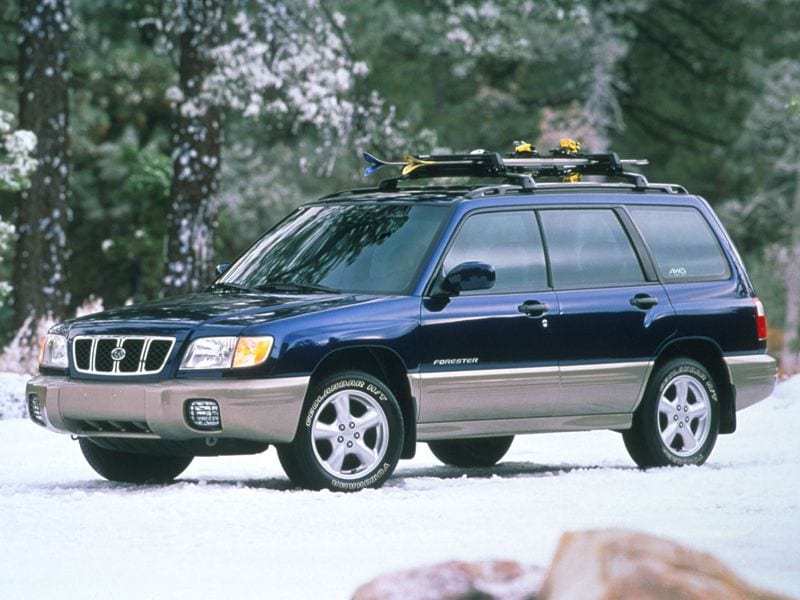
2001 Subaru Forester Photo ・ Photo by Subaru Media
When you don’t have much money to spend, but you still need to get through snowstorms, down forest trails, and across desert washes, you’ve got options. Especially if you believe modern all-wheel-drive systems offer all the 4x4 that most people need — as we do — you can find some cheap 4x4 used vehicles for $7,000 or less (in decent condition and with under 150,000 miles).
Now, you can find old BMW X5s, Land Rovers, and Porsche Cayennes for very low prices, but they can quickly get expensive to own. We've focused our list of 10 cheap used 4x4 vehicles on reliable mainstream-brand vehicles, some with traditional two-speed transfer cases and others with all-wheel-drive. We'd like to add that when you’re spending this little money on a used vehicle, you can’t expect perfection. Look for something in good mechanical condition, not flawless cosmetics. Keep reading for our picks, in alphabetical order.
1. Ford Explorer (2006-2010)
Ford made a bunch of changes to the third-generation Explorer for the 2006 model year, making it a much better SUV than it was before.
With rugged body-on-frame construction, seating for up to seven people, a choice between V6 and V8 engines, and a range of trim levels spanning from basic to luxurious, the 2006-2010 Ford Explorer represents value. Cargo volume measures 45.1 cubic feet behind the second-row seats, with up to 88 cubic feet available. Plus, when properly equipped, it can tow up to 7,300 pounds. Note that the Mercury Mountaineer and the Lincoln Aviator are basically the same thing as the Explorer. However, stay away from vehicles equipped with the optional air suspension, which is costly to fix when it breaks.

Photo by Ford
2. Ford Ranger (2004-2012)
By the time Ford refreshed the Ranger compact pickup truck for 2004, it had been building the second-generation version, itself a re-engineered version of the original 1983 Ranger, for more than half a decade. Not only that, but the automaker would also continue building this version of the Ranger for almost 10 more years with few major changes. With all of the bugs worked out, this makes the 2004-2012 Ford Ranger a good bet as a cheap, used 4x4 truck.
Highlights include an available 4.0-liter V6 good for more than 200 horsepower and a towing capacity of more than 5,500 pounds. Ford also offered an FX4 trim level that prepped the Ranger for serious off-roading capability. A downside to the Ranger is that it wasn’t offered in a crew-cab configuration. An upside is that it was uncompetitive when new, so resale values are low compared to a Toyota Tacoma. Note that the Mazda B Series pickup was basically the same thing as the Ranger, but with different styling.
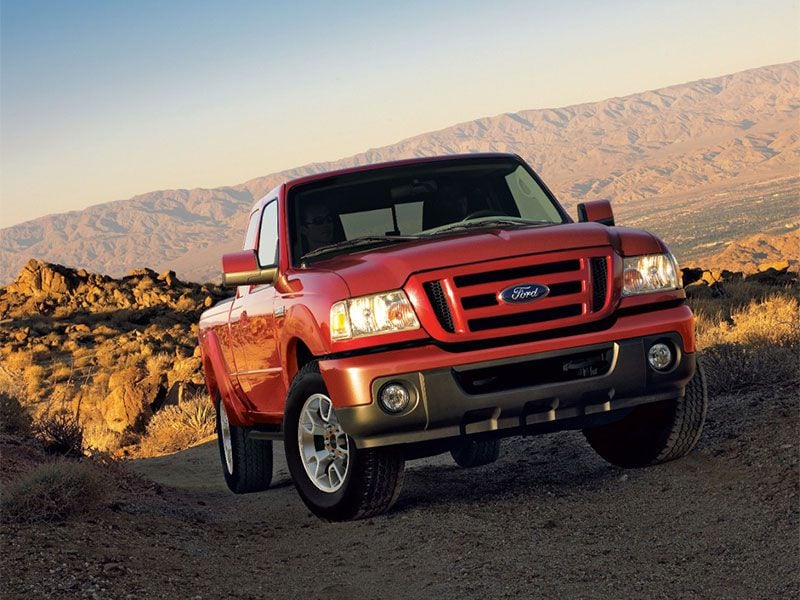
Photo by Ford
3. Honda CR-V (1997-2006)
If you find a well-priced first-generation (1997-2001) or second-generation (2002-2006) Honda CR-V that’s been well-maintained by its owners, buy it. With proper care and maintenance, they’ll faithfully serve any budget SUV buyer for years yet to come.
Both are boxes on wheels, sitting high off of the ground with impressive center clearance. When equipped with Honda’s Real Time four-wheel-drive (4WD) system, they automatically transfer power to the rear wheels when necessary to maintain traction. This is useful when it snows or for scrambling down a well-beaten path, but not for serious terrain. Indeed, the early versions of the Honda CR-V are best used for commuting while getting decent gas mileage, carrying up to 72 cubic feet of cargo (second-generation version), and providing dependable service in exchange for regular maintenance.
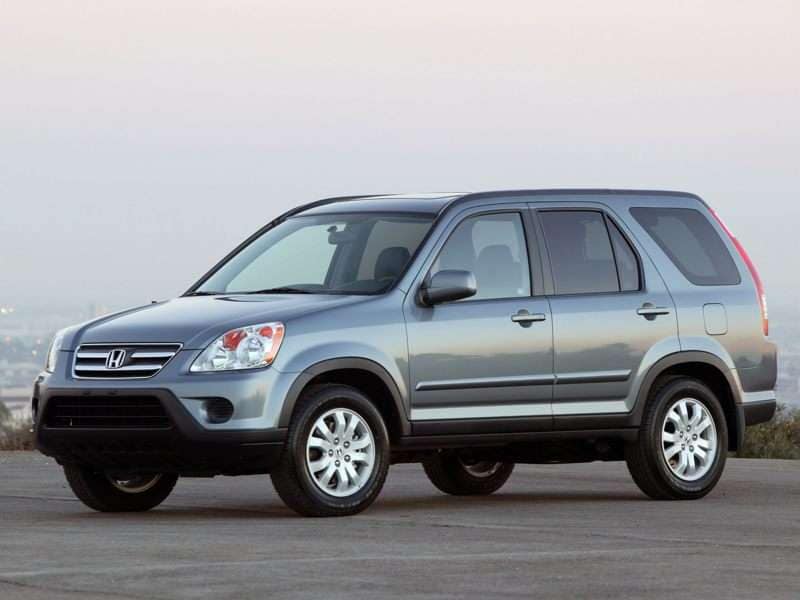
Photo by Honda
4. Jeep Grand Cherokee (1999-2010)
Jeep Grand Cherokees are known for their ability to go places other SUVs can’t. At the same time, they’re also known for requiring regular repairs, especially when their prior owners maintained them or abused them with indifference. Brilliant off-road, and decent to drive on pavement, the second- and third-generation Grand Cherokee models trade outright dependability for impressive off-roading capability.
Our favorite is the simpler second generation, sold from 1999 to 2004. But the 2005-2010 models offer greater sophistication and, in SRT format, performance. Trim levels range from relatively basic to downright luxurious, and, depending on the engine (V6 or choice of V8s), configuration (rear-wheel or 4WD), and model year, a Grand Cherokee was rated to tow up to 7,400 lbs. and carry as much as 72.3 cubic feet of cargo.
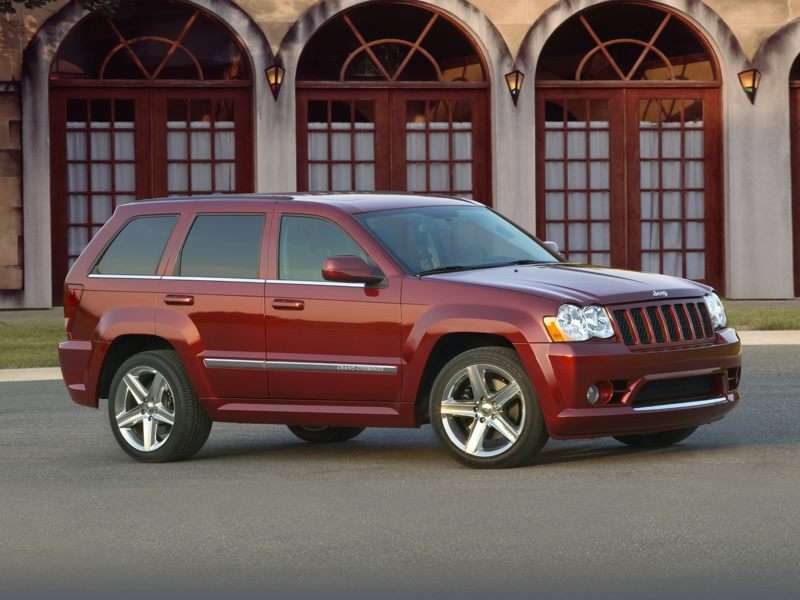
Photo by Jeep
5. Kia Sorento (2003-2009)
The original Kia Sorento was a rugged, body-on-frame SUV with rear-wheel drive or 4WD. Designed to outlast its original 10-year/100,000-mile warranty, styled to appeal to a wide variety of buyers, and roomy enough for five people or as much as 66.4 cubic feet of cargo, the Sorento is an often-overlooked gem on the used suv market.
Kia offered the first-generation Sorento in LX and EX trim levels, each decently equipped and comfortable. Upgrades included leather seats, automatic climate control, a premium sound system, and more. The 192-hp, 3.5-liter V6 won’t win any drag races, the Sorento gets terrible fuel economy due to its ponderous weight, and towing capacity is limited to 3,500 lbs, but this SUV is capable when the pavement ends and is dependable when cared for properly.
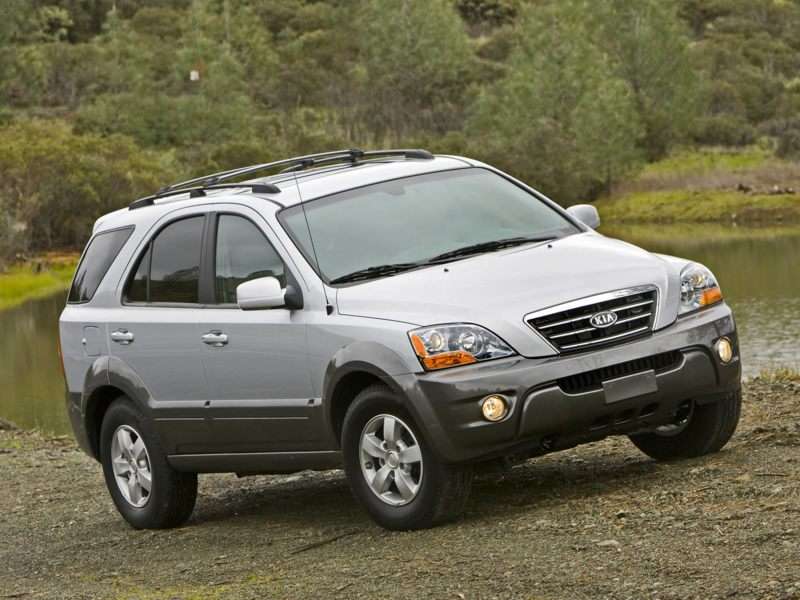
Photo by Kia
6. Mitsubishi Montero Sport (1997-2004)
Remember when Mitsubishi made cool cars and SUVs that you actually wanted to buy? The rugged Montero Sport was one of them, powered by a four-cylinder or a choice between two V6 engines and equipped with rear-wheel or 4WD.
Based on the same engineering as the larger Montero, the Montero Sport is a durable SUV that’s ready for the rough stuff. It seats five people, carries a whopping 44.3 cubic feet of cargo behind the rear seat, and can manage 79.3 cubic feet with the rear seat folded down. When properly equipped, the Montero Sport can tow 5,000 lbs. Updates for the 1999 and 2000 model years brought more power, refinement, and equipment, but there’s no hiding the rugged truck hiding under the SUV bodywork. On pavement, it drives like what it is.
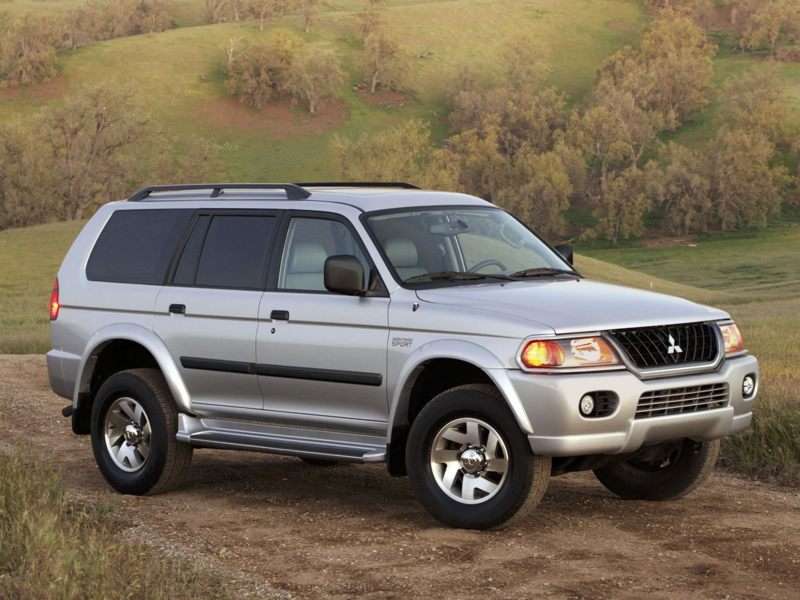
Photo by Mitsubishi
7. Nissan Xterra (2000-2004)
When Nissan debuted the original Xterra at the start of this century, SUV buyers went wild for its stepped-roof design with dual roof racks, purposeful styling details, and tough Frontier pickup truck underpinnings. A low price and a promise of reliability were also strong draws for the Xterra.
Offered in two basic levels of specification, equipped with a four-cylinder or a V6 engine, featuring a manual or an automatic transmission, and offering rear-wheel or 4WD, the first-generation Xterra was anything but refined. But that’s what made it so appealing and charming. It was made to get dirty and looked best with mud splashed all over it. With the V6 engine, the Xterra can tow 5,000 lbs. Cargo space measures 44.5 cubic feet behind the rear seat and 65.6 cubic feet with the rear seat folded down. Find one that hasn’t been thrashed, and it should prove a good, affordable choice for traveling well off the beaten path.
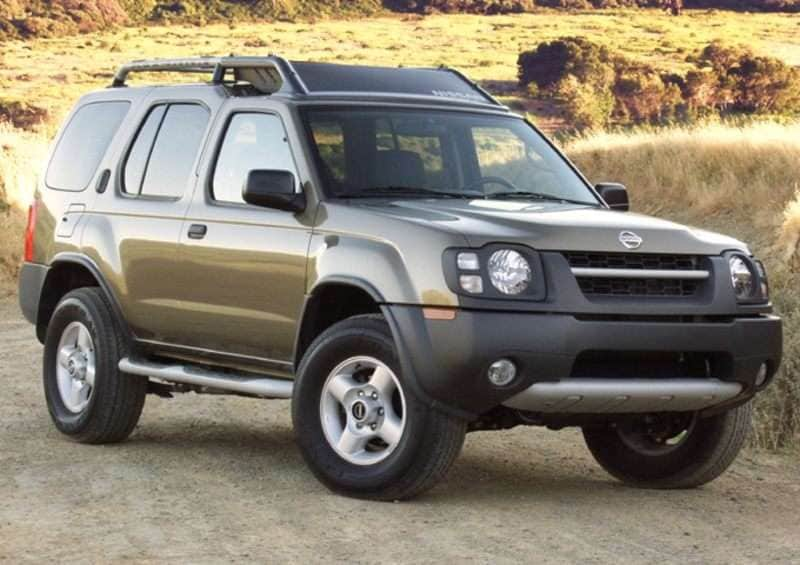
Photo by Nissan
8. Subaru Forester (1998-2008)
When Subaru introduced the Forester for the 1998 model year, it hit upon a recipe that remains popular to this day. Equipped with a four-cylinder engine, all-wheel drive, plenty of ground clearance, impressive safety engineering, and a boxy design equally accommodating of people and cargo, the Forester proved instrumental in helping to transform Subaru from a quirky small-batch automaker into a household automotive brand name.
Competing with the Honda CR-V and Toyota RAV4, the Forester offered up to 68.6 cubic feet of cargo space and a generous 8.1 inches of ground clearance. In addition to the standard four-cylinder, a turbocharged four-cylinder perfect for preserving power at elevation was available in some models. Manual and automatic transmissions put the power to all four wheels, ensuring maximum traction at all times.
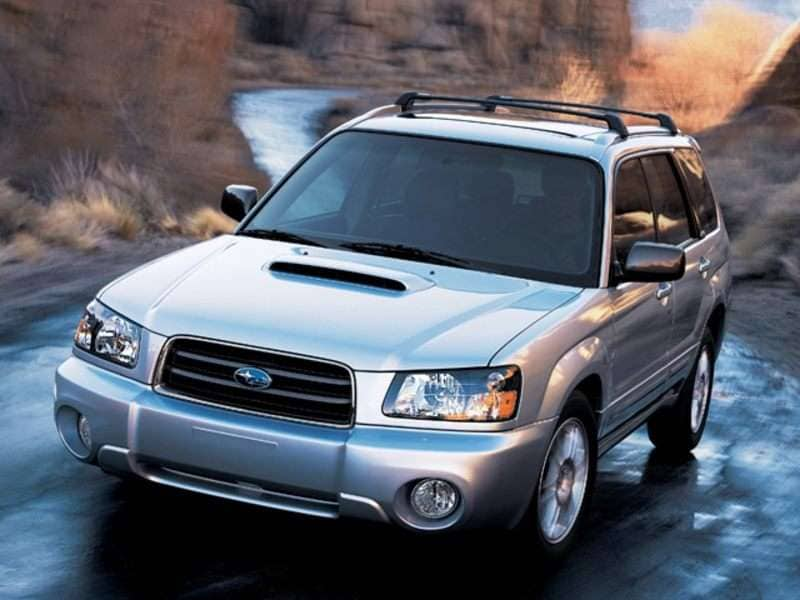
Photo by Subaru
9. Subaru Outback (1996-2004)
Two car-based SUVs went on sale in 1996. One was the Toyota RAV4. The other was the Subaru Outback. Based on the Subaru Legacy mid-size station wagon, the Outback featured a raised suspension, two-tone paint, and oversized fog lights to convey its SUV-ness. It’s a recipe that has stood the test of time, even through to the 2020s. Roomy inside, safe in a crash, and pleasing to drive, well-maintained examples of the first- and second-generation Outback models make good choices for budget buyers.
Engine choices included the popular 2.5-liter four-cylinder or a 3.0-liter six-cylinder, each a boxer-style powerplant with horizontally opposed piston design. All-wheel drive came standard, fed power by a manual or automatic transmission.

Photo by Subaru
10. Toyota RAV4 (1996-2005)
Tall and tiny, the original RAV4 struck a compelling balance between SUV styling and capability and the driving dynamics and fuel economy of a traditional car. It helped that the RAV4 was affordable, too, bringing utility and AWD capability to the masses.
First-generation RAV4s came in rare two-door and common four-door body styles, and a convertible version of the two-door was available for a short time. The second-generation RAV4 arrived for the 2001 model year, growing in size and available only as a four-door model. With durable four-cylinder engines, front-wheel or all-wheel drive, decent ground clearance, and lots of utility —thanks in part to Toyota’s decision to hang the spare tire on the cargo door rather than stash it under the cargo floor, — the RAV4 is a dependable, practical, and affordable choice among cheap used 4x4 vehicles.
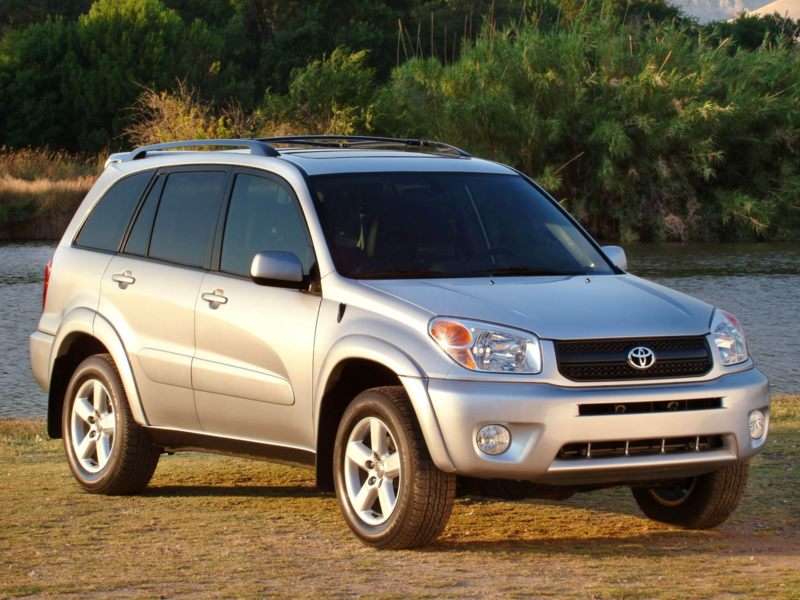
Photo by Toyota